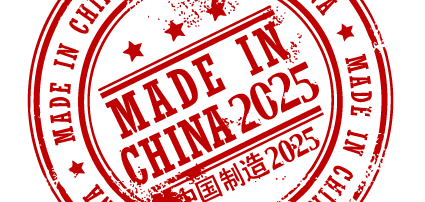 What the BRI means for China’s IP strategy… Part II
What the BRI means for China’s IP strategy… Part II
The One Belt One Road initiative, now called the Belt and Road initiative (BRI), is nothing new. For a while, China has been investing time and effort into re-imagining existing trade-routes along the silk roads of antiquity. The impact of this Chinese-led economic initiative has been widespread and along with promises for increased economic growth and trade comes the concern that new challenges will be faced in the world of intellectual property (IP). In this article, Elliot Papageorgiou and Molly Zhuang, from Clyde & Co, advise how European businesses can prepare for new IP challenges arising from the BRI.
In late-2013, President Xi Jinping was proposing a new ‘economic belt’ along ancient silk roads and a ‘21st century maritime silk road’. What is new, is the visibility and attention that many of China’s projects have recently been accorded. Due to this visibility, now is a key time for European businesses in China to consider what these projects mean from an IP perspective.
What countries are featured in the BRI and how will it impact the IP environment?
According to official sources, China’s BRI covers a total of 66 countries. From a European perspective, the BRI spans countries along almost the entire European Union (EU) eastern border, despite some of these countries having IP systems considered a ‘work in progress’. From an IP perspective, one would:
- Expect China to generate more outbound IP, and increased IP filings especially along BRI routes and in BRI countries.
The Chinese Government will continue to encourage Chinese companies to proactively file abroad by providing support and added incentives. Those along the various BRI routes will benefit from this drive. Expect increased filing in countries like India, Singapore, Vietnam, Thailand, Malaysia, Philippines, Turkey, Indonesia, Kazakhstan, Kyrgyzstan, Uzbekistan, Tajikistan, Iran, and Russia since these countries are given special attention by being listed as one of China’s 14 stops on the ‘land-belt’ portion of the BRI.
2. Expect increased filing in China by larger BRI countries.
While the total amount of IP filed in China by BRI countries has remained modest (only Singapore ranked in any top 10 filing list), one can expect to see a steady increase in filings by BRI countries as they receive greater exposure to China’s economy, industry and culture. Specifically, one should expect to see countries such as Russia, India, Turkey, Thailand, Malaysia and Singapore to increase their IP filings in China.
3. Expect Chinese brands to become more prominent along BRI routes.
Internationalisation of Chinese brands is one of the strategic tasks set out in the government’s China Manufacturing 2025 initiative. With greater Chinese investment along BRI routes countries will become more aware of Chinese brands as they accompany Chinese businesses going abroad.
How should European companies adapt their IP prosecution strategy in light of the BRI?
- File more trade marks in countries that follow the various BRI routes and in countries along Europe’s eastern border that are not already covered by European Union (EU) trademark protection.
European companies should consider filing trade marks for their core brands, core products and service classes in key countries along BRI routes and countries where EU trademark protection does not extend to. - Closely monitor trademark and patent applications in BRI countries, including China.
As a result of BRI, more of China’s IP is likely to be extended to countries along BRI routes. Therefore, to clearly understand competitors’ IP position and challenge their trademark or patents if necessary, European businesses should closely watch competitors’ IP in China and key countries along BRI routes. - Develop a robust system for securing and formalising prior art evidence in China.
Building up a database of prior art/prior use/prior publication evidence will continue to grow in importance as the number of intellectual property rights (IPR) originating in China continues to increase. If prior art evidence is secured in China for later use, then fewer formalities are required (i.e. only notarisation is required) than if properly secured overseas. This saves both on time and expense. - Consider invalidating rights in China, before they are extended/designated along BRI routes. Given that China-origin IP rights are expected to increasingly be extended to BRI countries, if European companies discover adverse IP rights in China they should attack them as quickly as possible.
- Evaluate the technological potential of each BRI country on what it could potentially do for businesses.
For broadly applicable technologies, in quite a few BRI countries, they must have their patent and design rights adequately supplemented. Some of these technologies include those relevant to shipping, railways, road-transport and infrastructure/road-building industries. For other industries, supplemental filing will be more geographically limited. For example, in certain sectors of the petrochemical industry securing rights in Kazakhstan will likely be a higher priority than in Serbia.
How should European businesses adapt their IP enforcement strategy in light of the BRI?
- Adapt customs recordals and enforcement in China.
As China expands its economic reach along BRI routes, increased trade between China and BRI countries will result. As Chinese customs is one of the few border control administrations that actively monitors exports from the country, investing in customs recordals for IPR in China, coupled with appropriate training and support for customs enforcement, will continue to be important to maintaining control over infringements in BRI countries. - Focus on improving customs policing in key ports in China and BRI countries.
Given the intended routes of the BRI, focused customs policing and enforcement will be crucial. In China, depending on the product, policing should focus on the inland port of Urumqi near China’s northwestern border with Russia and hub-ports like Dalian, Tianjin, Qingdao, Shanghai, Ningbo, Xiamen, Guangzhou and Shenzhen. Furthermore, border crossings with Russia, Kazakhstan, Vietnam, Laos, Myanmar, Tajikistan, Kyrgyzstan and Mongolia will warrant greater focus as well. - Increase IP enforcement in European countries that border those participating in the BRI. Increased trade along BRI routes has the potential to increase infringement and cause other IP issues along the eastern border of the EU. In order to counteract this, European businesses will need to invest in IP enforcement along the EU eastern border and in European BRI countries.
- Re-double enforcement efforts in China.
China’s IP enforcement system is gaining experience much faster than other countries’ IP systems are. China’s administrative enforcement authorities (this being rare or non-existent in many other jurisdictions) number well over 150,000. In the last 10 years, China’s court systems have honed their IP expertise by participating in over 800,000 cases of IP-litigation (213,000 in 2017 alone). In short, China’s IP enforcement system is arguably more accomplished than many other countries along BRI routes. In light of this, European businesses would be well advised to re-double their IP enforcement efforts in China and use their considerable tools to stop infringers before they strike-out along BRI routes.
The BRI has the potential for greatly impacting the economies of every country along its routes. However, one thing is for certain, it will also open up a host of new IP challenges and require new ways of thinking about IP protection and enforcement. Surprisingly for some, the best option for effectively enforcing IPR, may involve strengthening IP protection and enforcement efforts in China.
With over 2,500 staff across six continents, Clyde & Co is well known for its expertise in emerging markets, international trade, and high profile and/or difficult dispute resolution work. It has a well-established IP practice in the Middle-East and North Africa and launched its Greater China IP practice in 2017 centred around Elliot Papageorgiou. It’s core industrial sectors centre on industrial manufacturing, infrastructure, insurance, international trade, transportation and natural resources, with a fast-growing reputation in other industries as well.



Recent Comments